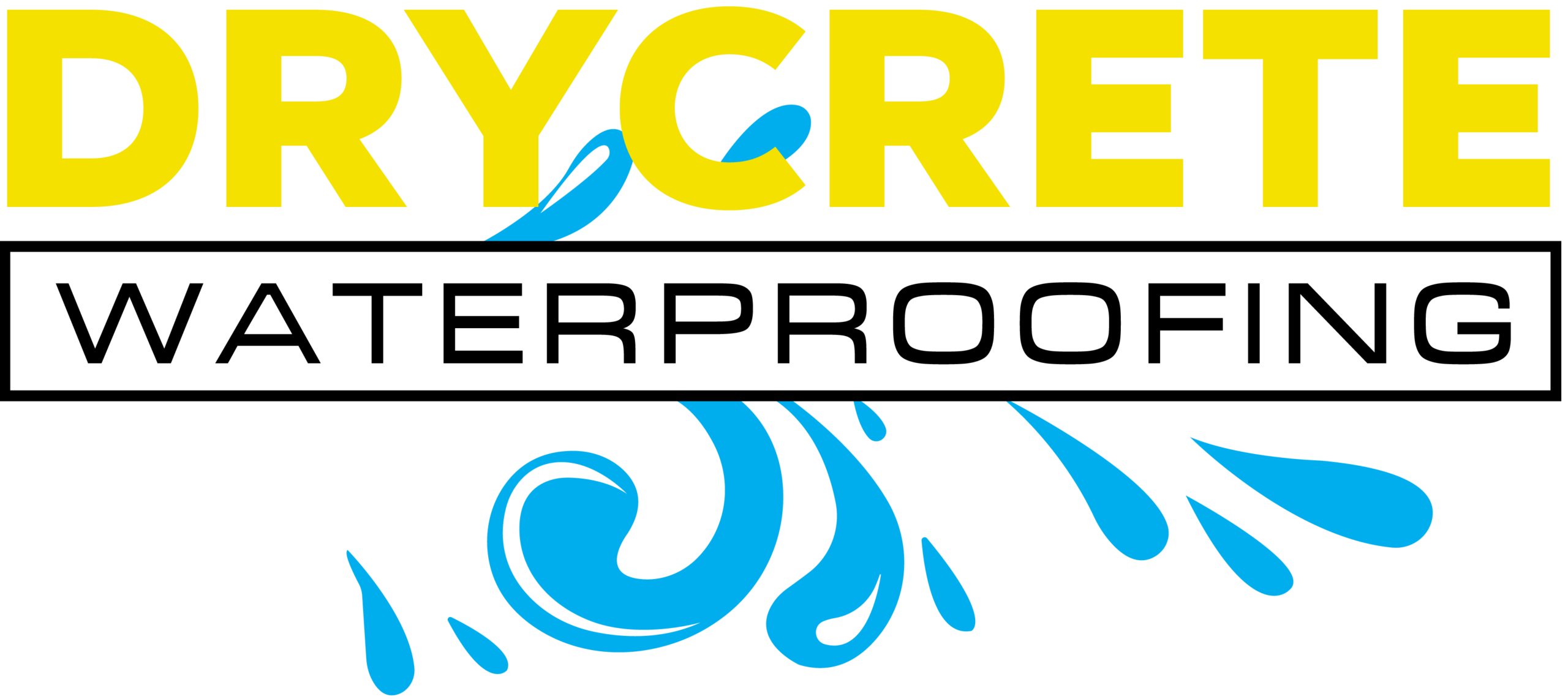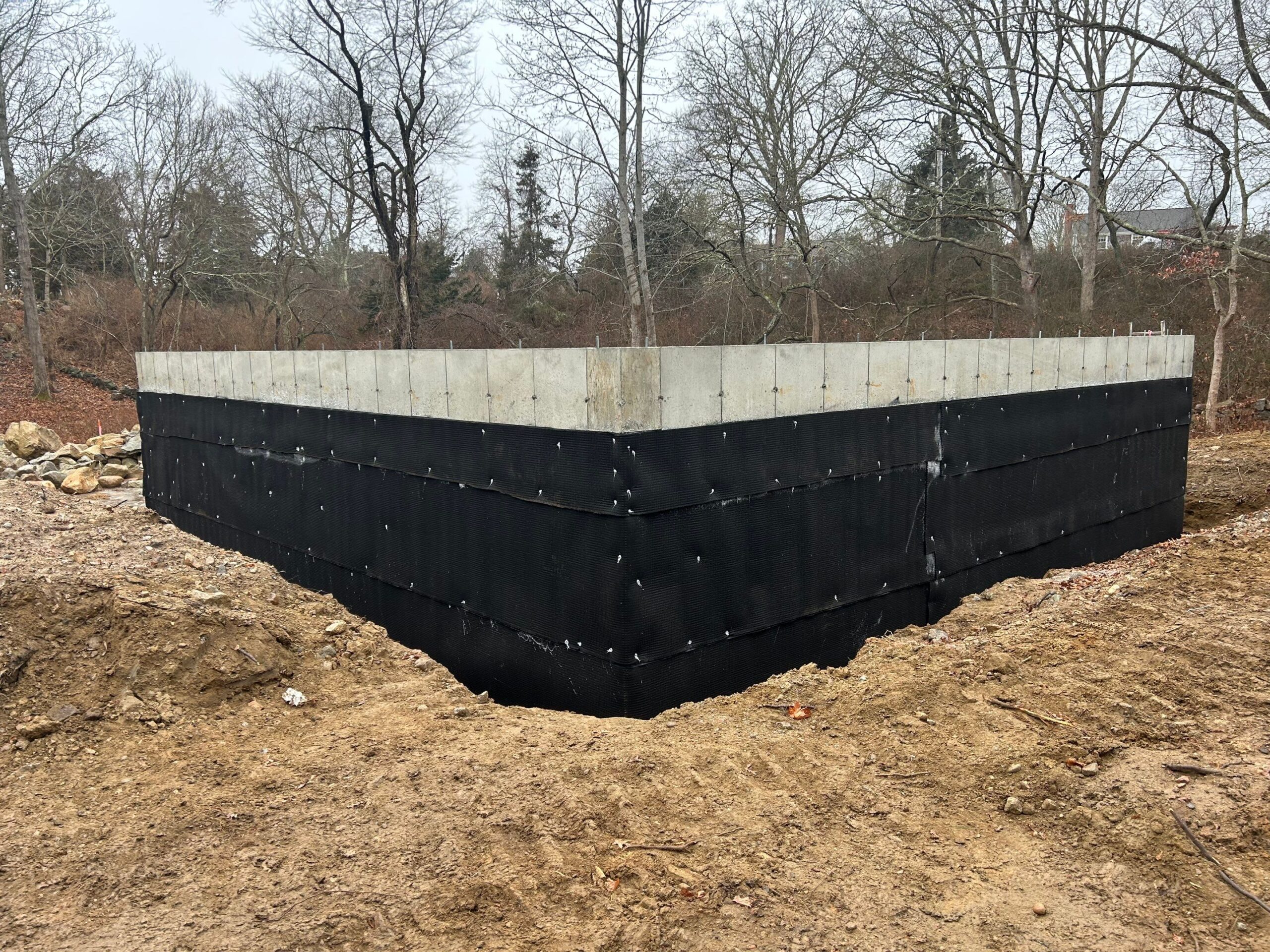While they may sound the same damp proofing and waterproofing your basement aren’t interchangeable terms. While, yes, dampness is caused by water getting where it shouldn’t, anyone who’s ever found a puddle on their basement floor will tell you that there’s a world of difference between damp problems and water ingress. So, when weighing out damp proofing vs waterproofing, what are we really talking about?
What is Damp Proofing?
Foundation damp proofing is a collection of methods used to resist moisture penetration into your building materials. This generally takes the form of various damp-proof membranes and coatings which aim to stop water vapor from finding its way into your basement.
You’ll generally find damp proofing layers around the foundations and under the floors of new build houses, though retrofitting an older building is possible.
While there’s no denying the value of damp proofing, it’s not without its limitations. Problems caused by water in its liquid state, particularly hydrostatic pressure, won’t be stopped via a thin layer of plastic.
What is Waterproofing?
Waterproofing is a more comprehensive series of methods which helps manage water, ensuring that it stays out of the places you don’t want it. A really thorough waterproofing system will include much of the same things as a damp proofing one, but will go a lot further. Some of the extra features might include:
- French Drains
- Sump Pumps
- Sealants
- Waterproof membranes
These all allow your waterproofing to cope with water in its various forms, wherever it might threaten your foundations from. Whether its vapor, saturated soil after heavy rain, flooding or any other source, there’s a waterproofing method to deal with it. These systems can be installed in and around basements, retaining walls, driveways, paths or even just areas which are prone to flooding.
Which systems are worth considering depends on the nature of the problem you’re facing and where it is. No two properties are exactly alike and neither are their issues with water intrusion, so it’s important to give real thought to the issue before starting any work.
Damp Proofing vs Waterproofing: Why Waterproofing Wins
While damp proofing is an important step in keeping your house free of moisture and all its attendant problems, we’d always recommend going for the most comprehensive cover possible. A good waterproofing system will alleviate the same issues as damp proofing, but will also tackle problems like hydrostatic pressure and flowing water.
While damp proofing may be enough for some properties, the general rule is that there’s no such thing as overkill. Freak weather events are becoming more common, so having protection in place is never a bad idea if the budget will allow.
Damp Proofing vs Waterproofing: The Key Differences
So, now that we’ve covered what both damp and waterproofing are, what exactly are the key differences? Let’s break this down into five sections so we can take a detailed look at the differences between damp proofing vs waterproofing.
Materials
The first, and most physically obvious, difference between foundation damp proofing and comprehensive waterproofing are the materials used.
Damp proofing is generally pretty straightforward: bitumen paints, plastic sheeting or exterior dimple board create a barrier that stops vapor finding a way through.
Waterproofing might well use some of the same materials, but it generally goes a bit further. Adding in things like French drains, sump pumps, resin crack injections and epoxies mean that it can resist and control water in many more ways.
Performance
When it comes to performance, there’s a clear winner in the damp proofing vs waterproofing debate.
While damp proofing is great at stopping vapor getting into the fabric of your building, that’s all it does. Don’t get us wrong, this is an important problem to deal with. Dampness can lead to all kinds of problems from mold and mildew to structural failure and rot and no one wants to deal with any of those. That being said, it’s only one source of these problems.
Waterproofing on the other hand, will deal with vapor-based issues and the threat from other forms of moisture too. When done properly, this level of control should be enough to prevent the risk of water intrusion entirely.
Costs
Weighing out the costs of damp proofing vs waterproofing is a little more tricky.
There’s no denying that damp proofing is generally less expensive in terms of immediate costs. This is especially true in new build projects where issues of access are minimized. It’s basic economics: there’s more work involved in a comprehensive system, so it costs more.
That being said, the costs of a building go on long after the build is completed. If water should find its way through and trouble your basement, the cost of fixing the problem and repairing any damage can be astronomical. Whether this potential cost outweighs the immediate budget concerns isn’t something a blog can answer.
Another factor to consider is in ease of maintenance and eventual replacement. Nothing lasts forever and eventually things will start to wear out. With waterproofing systems, many elements (such as sump pumps) are easily accessed when things go wrong. The same can’t be said for foundation damp proofing.
Durability
When it comes to longevity, waterproofing tends to have the advantage. There are a couple of reasons for this:
A lot of damp proofing work, especially in newer properties, is external. This means that once it’s in place, it can be tricky (and expensive) to access. That means that routine maintenance is harder. On the other hand, waterproofing methods like French drains and sump pumps can be easily reached for inspections and cleaning.
Secondly, because waterproofing is more comprehensive, the strain on any one given part is lessened. Having French drains installed along your basement’s perimeter reduces the hydrostatic pressure all the way along, for example.
Applications
As we said above, not all homes and businesses need a truly comprehensive course of waterproofing.
Sometimes foundation damp proofing really is all you need. Perhaps you live in an arid area or your home has particularly great natural drainage. If so, damp proofing may well be more than enough to meet your protection needs.
For the rest of us, a more comprehensive solution is probably in order. This goes double for anyone who lives in an area that’s particularly prone to heavy rainfall, flooding or excessive groundwater.
When to Choose Damp Proofing
Damp proofing is an ideal solution for the most common moisture problems in drier locations or places with good natural drainage. These places don’t tend to suffer from problems with liquid water sloshing through their walls (though it’s never impossible).
It’s also worth investing in exterior damp proofing during any construction, regardless of location. It’s a lot easier (and cheaper) to deal with this while building than it is to come back and retrofit it later. If it has been ignored, there are internal options that won’t break the bank and are certainly cheaper than waterproofing, but it’s best to get it done right in the first place.
When to Choose Waterproofing
If you’re not lucky enough to live in a particularly dry area, waterproofing is a better bet. The higher-risk the location, the more important it is to install a comprehensive system to deal with water problems.
Even in areas that haven’t previously had issues with flooding or high groundwater, some level of waterproofing could still be a great investment. The greater level of protection for your valuables and property and the peace of mind as weather patterns change can’t be overstated.
Waterproofing systems can be tailored to your property’s particular issues, incorporating a range of advanced features and futureproofing you against threats.
The Role of Professional Assessment
Whichever you opt for when it comes to deciding between damp proofing and waterproofing your basement, it’s important to get the opinion of the professionals. No two locations are ever identical, so an onsite inspection from someone who really knows what they’re looking at can be invaluable.
They’ll take into account things like local soil conditions, prevalent weather patterns, hydrostatic pressure risks, local moisture sources and other factors that could prove problematic. This will allow them to suggest a series of solutions tailored to your particular needs and budget.
Combining Waterproofing and Damp Proofing
As we mentioned above, there’s really no such thing as overkill when it comes to keeping your foundations dry. Often the most effective way of doing this is to combine both damp proofing and waterproofing techniques to offer even more protection.
Using the basic damp proofing layers as a base can greatly increase the effectiveness of other methods for controlling water. Overlapping these techniques and systems not only offers you greater protection and peace of mind, it can also save you money too. This is particularly true if any work that requires excavation is taking place- digging costs, so getting it all done from the same trench can be a significant saving.
When it comes to weighing out damp proofing vs waterproofing the answer is another question: why not both?

